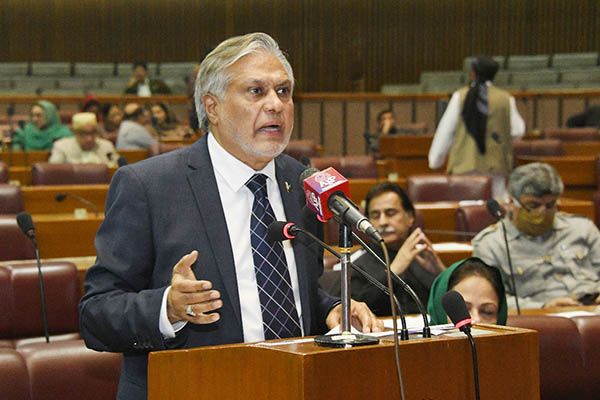
Courtesy National Assembly of Pakistan
Finance Minister Ishaq Dar has found a moment of relief—amidst a crisis that he has yet to resolve—announcing that the board of the China Development Bank has approved a $700 million loan for Pakistan. The State Bank of Pakistan is expected to receive the money this week, shoring up the country’s worryingly-low foreign exchange reserves even as the country comes to terms with an estimated GDP growth of 2 percent for the ongoing fiscal year. According to the World Bank, Pakistan’s slow growth will reflect damages and disruptions caused by “recent floods, a tight monetary stance, high inflation, and a less conducive global environment.” The bank predicts that recovery will be gradual, with real GDP growth projected to reach only 3.2 percent in the next fiscal year.
At the same time, the national poverty rate is expected to increase from 2.5 to 4 percent, pushing an additional 9 million people into poverty. Inflation, already crossing 30 percent, is expected to average out around 23 percent, bolstered by flood-related disruptions to the supply chain, higher energy prices, and difficult external conditions, including tighter global monetary conditions. The resulting price hike is most significantly impacting the country’s poor and middle classes. Macro-economically, Pakistan needs to reckon with its current account deficit, public debt, and lower demand from traditional export markets amid subdued global growth. The World Bank has also voiced concerns over the state of South Asia as a whole, noting that growth was dampening in the region due to “major global and regional shocks including rising inflation; the impacts of the global food, fertilizer and fuel shortages; the economic crisis in Sri Lanka; and the catastrophic floods in Pakistan.”
None of this inspires much optimism. Especially in the face of political instability that shows few signs of abating. Ousted prime minister Imran Khan, in his bid for early general elections, has moved from street agitation to dissolution of assemblies and now to a lackluster “Jail Bharo” movement. By contrast, the government of Prime Minister Shehbaz Sharif appears paralyzed by indecision, as it struggles to accommodate an alliance of 14 political parties with widely differing agendas.
